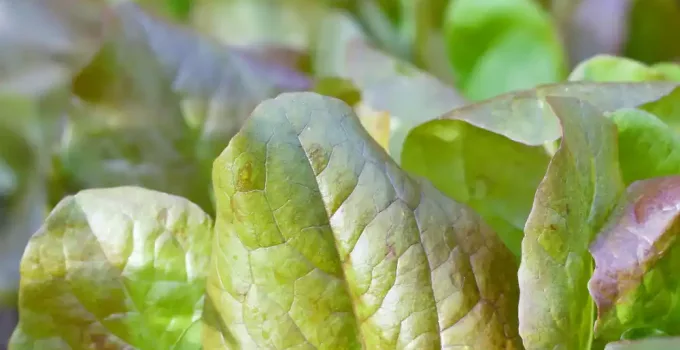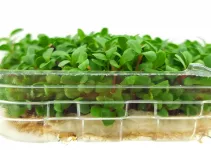Learning how to grow hydroponic lettuce is actually what most people start off with when coming into the fascinating world of hydroponics. It’s one of the easiest plants to grow both on a small scale and on the commercial scale.
Hydroponics is usually associated with growing lettuce on the industrial scale. We’ve all seen those documentaries featuring greenhouses where huge rafts of Styrofoam with lettuce embedded in holes are pushed around in huge reservoirs.
As you start to read more about hydroponics, you end up discovering a universe where a variety of plants can be grown just from water and nutrient solutions. And you might also end up discovering that there’s even a system called aquaponics where you can grow both fish and plants in a symbiotic relationship.
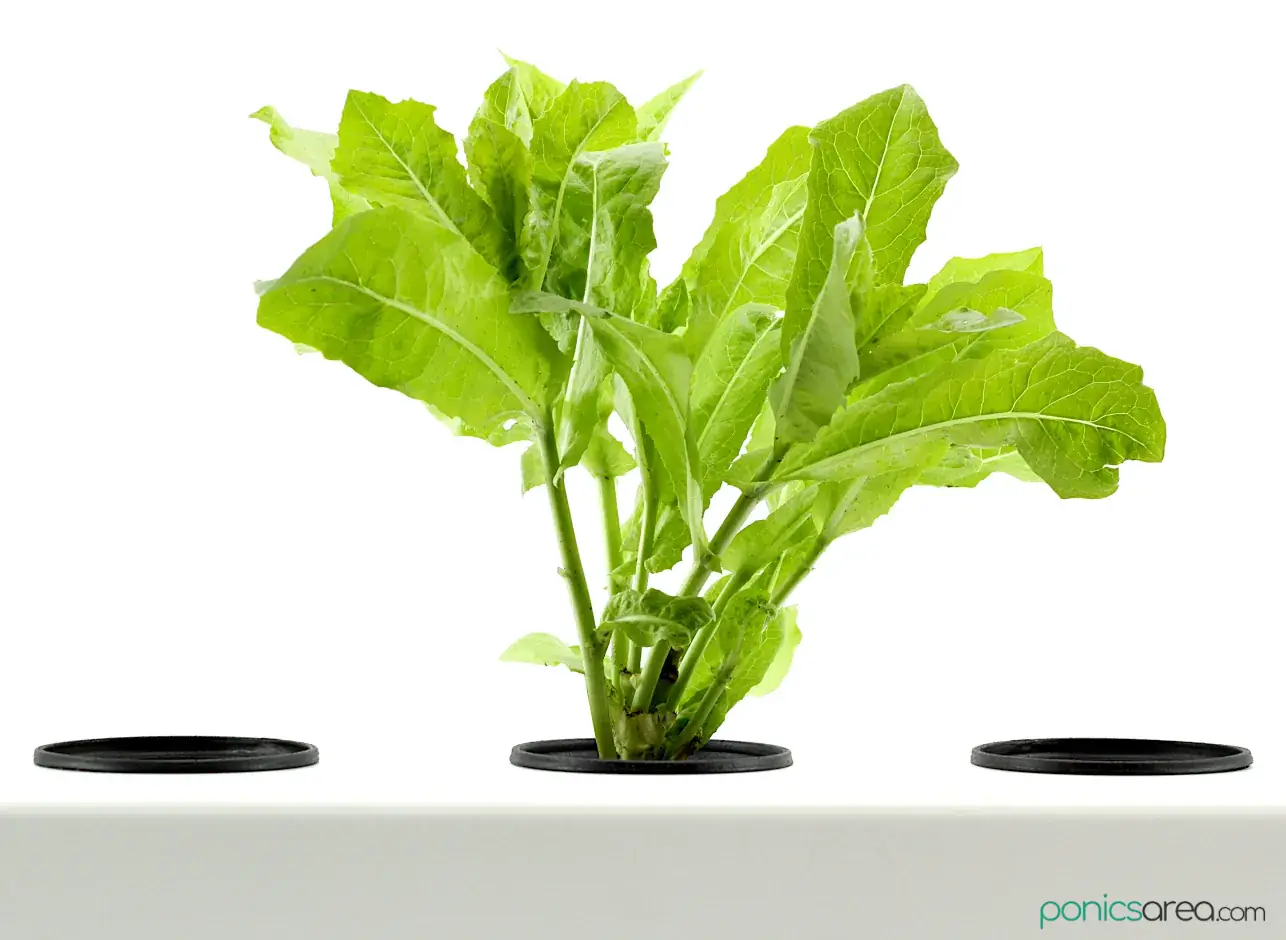
But let’s get back to actually talking about how you can grow hydroponic lettuce at home, indoors or outdoors, because there are plenty of possibilities for doing so.
Table of Contents
How to Grow Hydroponic Lettuce: Systems for Beginners
1. Overall best: AeroGarden Bounty
The AeroGarden Bounty is one of the best indoor gardens whether we want to grow lettuce, herbs, and even some small tomatoes, peppers and eggplants. It’s not a cheap system but it’s perfect for beginners. It’s the brand that offers the most resources for their systems. It might not get easier than this.
2. Best value: iDoo Hydroponics Growing System 12 Pods
iDoo is quite similar to AeroGarden with the significant difference that it’s a lot cheaper. Thus, if you want to try growing hydroponic lettuce on your countertop or wherever you have a bit of space, the system from iDoo can be a great start. We can grow up to 12 plants at the same time.
3. Expensive: Aerospring 27-Plant Vertical Hydroponics Indoor Growing System
This is not a tiny indoor garden like the above ones. We can grow 27 plants at the same time. It’s a small tower that can grow so much. Of course, it’s incredibly expensive so I’m not sure that beginners should consider this to be their first system for growing hydroponic lettuce. By the way, one of the cheapest and simplest ways is the Kratky method with mason jars.
1. Growing Hydroponic Lettuce with the Kratky Method
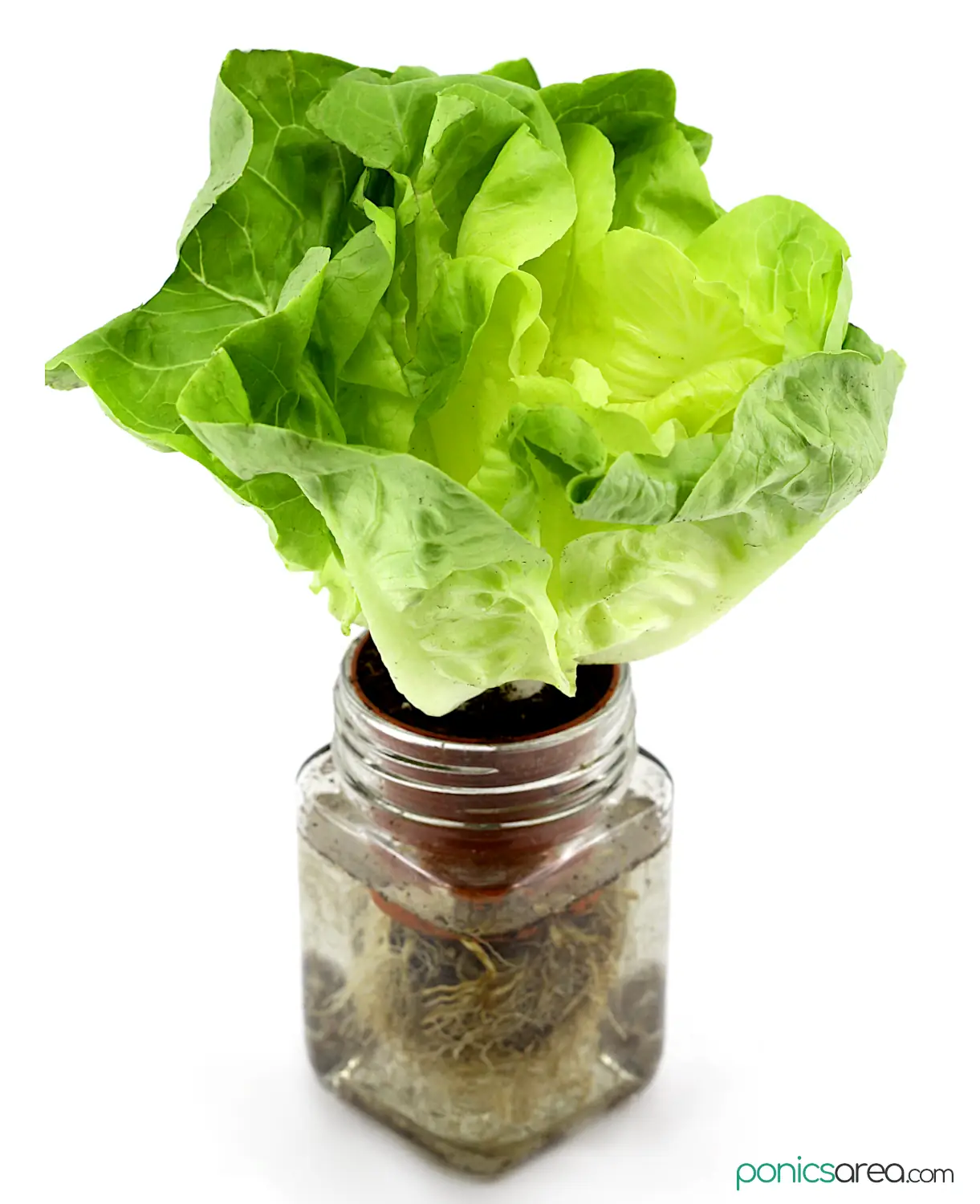
If you don’t want to build your own DIY hydroponics system nor do you want to spend money on buying a hydroponic indoor garden, then you can experiment with the Kratky method for growing hydroponic lettuce.
It’s a method that’s not very complicated but it will give you a full taste of what hydroponics is all about. The Kratky method can represent the start of your new passion. It also works for growing herbs and even cherry tomatoes, other leafy greens, and strawberries.
If you have seen pictures of jars with black net pots with some pebbles in them and lettuce or other herbs sprouting from those pebbles, then that’s the Kratky method.
It’s also known as mason jars hydroponics. And it’s one of the easiest and cheapest hydroponic systems.
Grow hydroponic lettuce with the Kratky method in 8 steps
Let’s see what we need to grow hydroponic lettuce with the Kratky method and which are the steps we should follow.
1. Germinate seeds
The easiest way to germinate lettuce seeds is in rockwool cubes.
I wrote a guide on how to germinate seeds in rockwool cubes when I talked about growing basil from seed. Or you can watch a YouTube video on how it’s done.
Basically, soak the rockwool cubes in water for about a minute. Place them in the skin to let the water drain for about 15 minutes.
Add 2-3 seeds per cube.
Pinch the hole of the cube shot. Or add some vermiculite on top.
Spray the seeds with a bit of water. One spray is enough.
Place the cubes with the seeds in a standard growing tray with a humidity dome. Or just improvise a container with a dome.
optimum germination temperature is 70 to 75°F.
Water the cubes once a day or once every 2 days. Simply pour a bit of water in the tray and the rockwool cubes will absorb the amount they need. Always remove the water that remains.
Once the seedlings appear, you can remove the dome.
The seedlings should appear in about a week. Now, you can place them in sunlight or under grow lights.
Trim the weaker seedling but don’t remove it entirely.
2. Transplant seedlings
For growing hydroponic lettuce with the Kratky method, I recommend using mason jars as containers. They’re very easy to use because you don’t have to modify anything about mason jars.
Once a few leaves have sprouted the transplanting can be done.
It will take about 2 weeks until the germination is done.
You will transplant the seedlings together with the rockwool cubes, you don’t have to take the seedlings out of the cubes and risk damaging their fragile roots.
3. Use quart jars with wide mouths
Quart jars with wide mouths (32 oz) are some of the best containers for the Kratky method when we’re growing smaller plants, like lettuce, leafy greens, herbs, and even strawberries.
Get as many jars as your number of rockwool cubes.
4. 3 inch net cups
The 3-inch net cups are where you place the rockwool cubes with the seedlings.
Besides the rockwool cubes you can also place aggregate clay pebbles to fill in the gaps around the rockwool, especially when using 3 inch net pots, which are quite big.
The hydroton will keep the rockwool cubes stable.
If you have smaller jars you should get 2 inch net cups.
5. Nutrient solution for hydroponics
Get a general nutrient solution for hydroponics. If you want to know more about this component, check out my article on the best hydroponic nutrients.
The MasterBlend 4-18-38 Tomato & Vegetable Fertilizer can be a good option for a very decent price.
6. Fill in the jars
Fill in the jars with water and nutrient solution.
The water should reach just above the bottom of the net pots, about an inch of water above the bottom is good.
You can wrap up the jars in colorful paper/aluminum foil to keep the light out of the water and for preventing algae growth.
7. Grow lights
If you don’t have access to sunlight, you need grow lights.
They’re a replacement for sunlight in hydroponics and they work really well.
Using grow lights for 16-18 hours on and 6-8 hours off will be a good replacement for sunlight.
8. Harvesting
Once the leaves are fully grown, you can start harvesting the big leaves for consumption. If you leave them in the set-up under the grow lights, other leaves will grow back.
But each time the leaves grow back, they will be less tender.
You can store them in a plastic bag or a storage container. Just store them dry, don’t wash them until you’re ready to consume them.
2. Growing Hydroponic Lettuce with DIY Systems
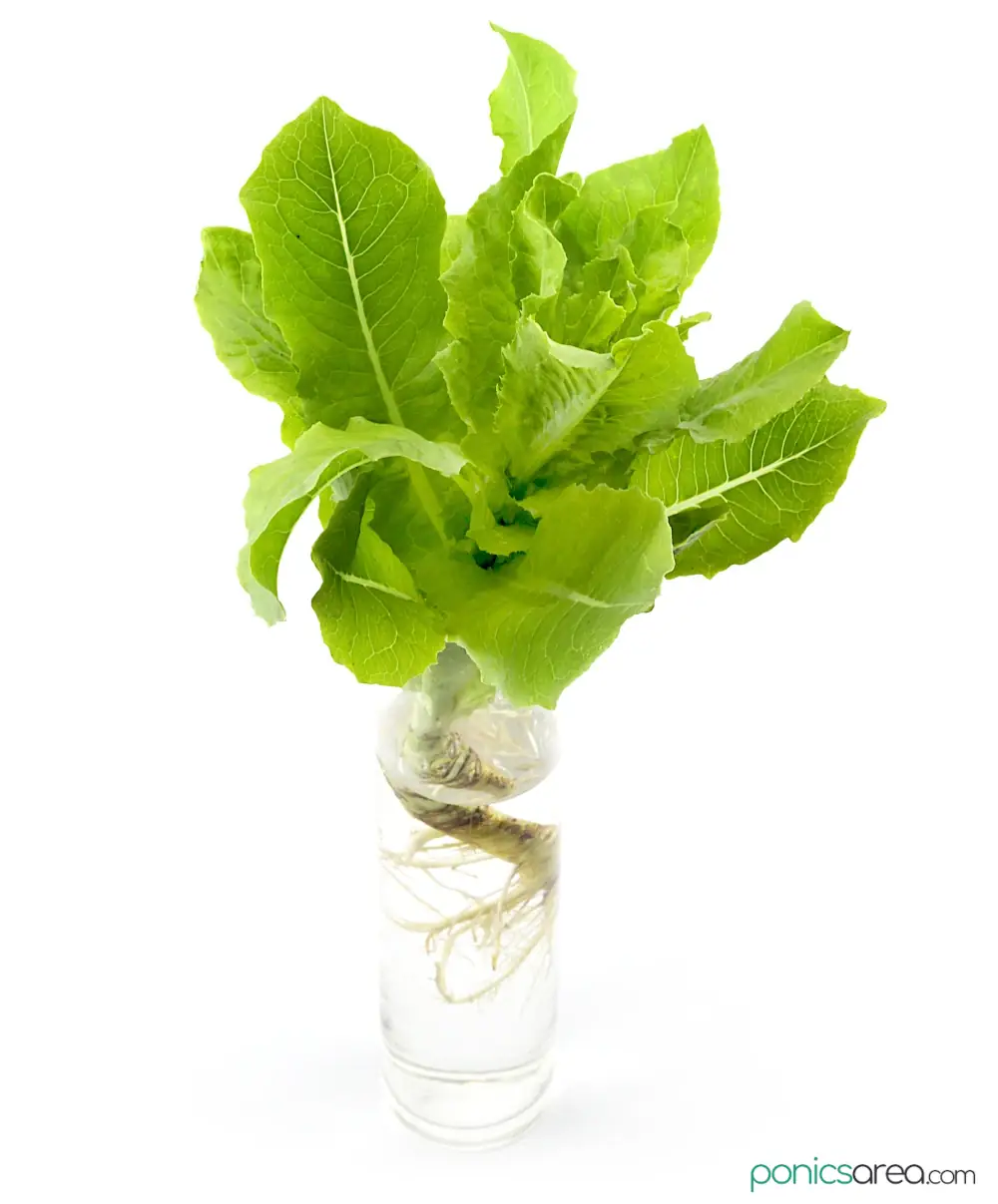
The simplest system that you can build for growing a lot of varieties of hydroponic lettuce as well as some herbs (basil, mint, thyme, parsley etc.) and other leafy greens (kale, collard greens, sorrel, chard, bok choy) is called deep water culture.
Lettuce is a thirsty plant that will thrive in a system that offers non-stop direct contact with water and nutrients, like a DWC system does.
The deep water culture system is just perfect if you don’t want to make a big investment both in terms of money and time.
It also doesn’t require a lot of knowledge about building things and putting parts together.
DWC components
Let’s see what you might need if you want to make your own DWC system for growing hydroponic lettuce.
1. Container
It can be an old aquarium tank or a big plastic container or a 5-gallon bucket.
You can also link 5 gallon buckets together to grow multiple plants at the same time.
If this is what you’re interested in, I recommend spending hours on YouTube because there are a lot of useful guides on how to build a proper DWC with linked 5-gallon buckets.
2. Nutrients
It’s easier to buy the nutrient solution than it is to make it.
You can get a nutrient solution for leafy greens and herbs or a general hydroponics nutrient solution.
3. Polystyrene raft/net pots
A polystyrene raft that will float on top of the water if you’re using a tank or an aquarium or whatever type of reservoir you choose to use.
If you’re growing in 5-gallon buckets or in a plastic storage tote, you’ll have to make holes for the net pots, where the lettuce will be placed.
Since the raft floats on the water, the roots of the lettuce will always be in the water and they will take as much water and nutrients as they need.
Instead of a raft, if you’re using a big plastic container with a lid, just put holes through the lid and that’s where you’ll insert the net pots.
4. Hydroton
If you want to grow hydroponic lettuce in a DWC you don’t necessarily need a hydroponic medium.
You can just place the sprouts directly in the net pots with their rockwool cubes but hydroton (expanded clay aggregate) is a great growing medium for DWC.
If you have germinated the seeds in rockwool cubes, you can transplant them into net pots together with the rockwool.
5. Grow lights
Use LED grow lights if you’re not growing in a greenhouse with plenty of sunlight.
A DWC can be done in an apartment or garage.
6. Air pump, air stone, tubing
You also absolutely need an air pump and an air stone for oxygenating the water plus tubing for connecting the air pump and air stone.
As the lettuce grows you can replace the absorbed water but you don’t have to replace the nutrient solution.
Where to Buy?
Check Price and User Reviews Here
Hydroponic lettuce works so well in DWC because the rafts can’t support a lot of weight but lettuce is just so light.
Herbs are another choice that works (not rosemary because it doesn’t do well with so much water).
The lettuce can also be placed closely together so, you will have a nice abundant crop. There’s absolutely no need for 12 inches spacing or such things.
If you want to go towards the expert route, the one where really passionate people go, you’ll become interested in hydroponics systems like nutrient film technique (NFT), ebb and flow, and drips. These are for the advanced.
NFT is another system used for growing lettuce hydroponically, especially by commercial growers.
How to Grow Hydroponic Lettuce: Ph & Other Useful Info
You have your DWC or whatever other system you prefer but now it’s time to known which are the conditions for growing lettuce hydroponically.
pH
The ideal pH for lettuce if 6.0 to 7.0.
If you want to get really serious about numbers, you’ll also want to know that lettuce prefers an EC of 1.2 (1.2 millisiemens).
Light
Lettuce is a long-day plant. It’s the kind of plant that loves a lot of sunlight, up to 18 hours of sunlight per day.
Using grow lights for 16-18 hours on and 6-8 hours off will work just as well.
Temperature
But lettuce is a cool plant so the air temperature should be below 75 degrees F (below 24 degrees C).
Growing medium
Coco coir or expanded clay aggregate (hydroton) is the best growing medium for this leafy green because these two provide good oxygenation.
Nutrient solution
In general, when it comes to nutrient solution, there is one rule: each head of lettuce requires a gallon of nutrient solution and water.
If you’re doing it like that with 1 plant per 1 gallon, then you won’t need to refill the nutrient solution until after harvest.
So, if you’re making a DWC with a certain number of 5-gallon buckets, which a lot of people do, then you will be able to grow five heads of lettuce per bucket.
If you’re interested in how the hydroponic bucket system is made, check out this video.
When germinating lettuce, once the seedlings start showing off, you need to trim away the weaker seedlings in order to support the strongest seedlings. It means that you need to put in a bit of work in the beginning but it will pay off.
3. Grow Hydroponic Lettuce in Indoor Gardens
This type of hydroponics systems are really perfect for beginners and I review a bunch of them in my post on the best hydroponic kits for beginners.
They offer many advantages and there are some models that don’t even cost that much, although I still wouldn’t call them cheap.
If you want a clear example of such a system, check out the iDoo Hydroponics Growing System. I think it’s an excellent choice for growing a lot of plants, including for growing hydroponic lettuce at home without needing to know too much.
The iDoo indoor garden kit consists of:
- reservoir (5 L capacity) – this is where you put water and nutrient solution
- the nutrient solution is included for your first crop, you will have to buy more for future crops
- 7 pods meaning you can grow 7 plants at the same time, you can grow a combination between lettuce and herbs but you can also go for strawberries, cherry tomatoes and more – it’s a medium hydroponic system if you judge it by the number of slots it has
- growth sponges 50pcs – this is the growing medium that replaces the soil, where you plant the seeds
- baskets and domes for the growth sponges – the domes will stay on until the seeds start to sprout, the germination is done in the system, you don’t have to germinate the seeds separately in a germination tray
- quite powerful nice grow lights
- water pump, which is awesome
- an alarm to let you know when the water is low
- there’s no alarm for replacing the nutrient solution but with lettuce it suffices to refill the water, the nutrient solution doesn’t need to be refilled
- the seeds are not included but that means that you get to pick which lettuce variety you want to grow hydroponically
Where to Buy?
Check Price and User Reviews Here
These ready-made systems are pretty awesome, they fit on the kitchen counter or on a chair in a corner so they’re truly convenient for those who have limited space.
Or for those who don’t have the time to research hydroponics with all it entails but still want to experiment with growing hydroponic lettuce and many more other plants, these small indoor garden systems clearly come with some nice advantages.
Hydroponic Lettuce Varieties
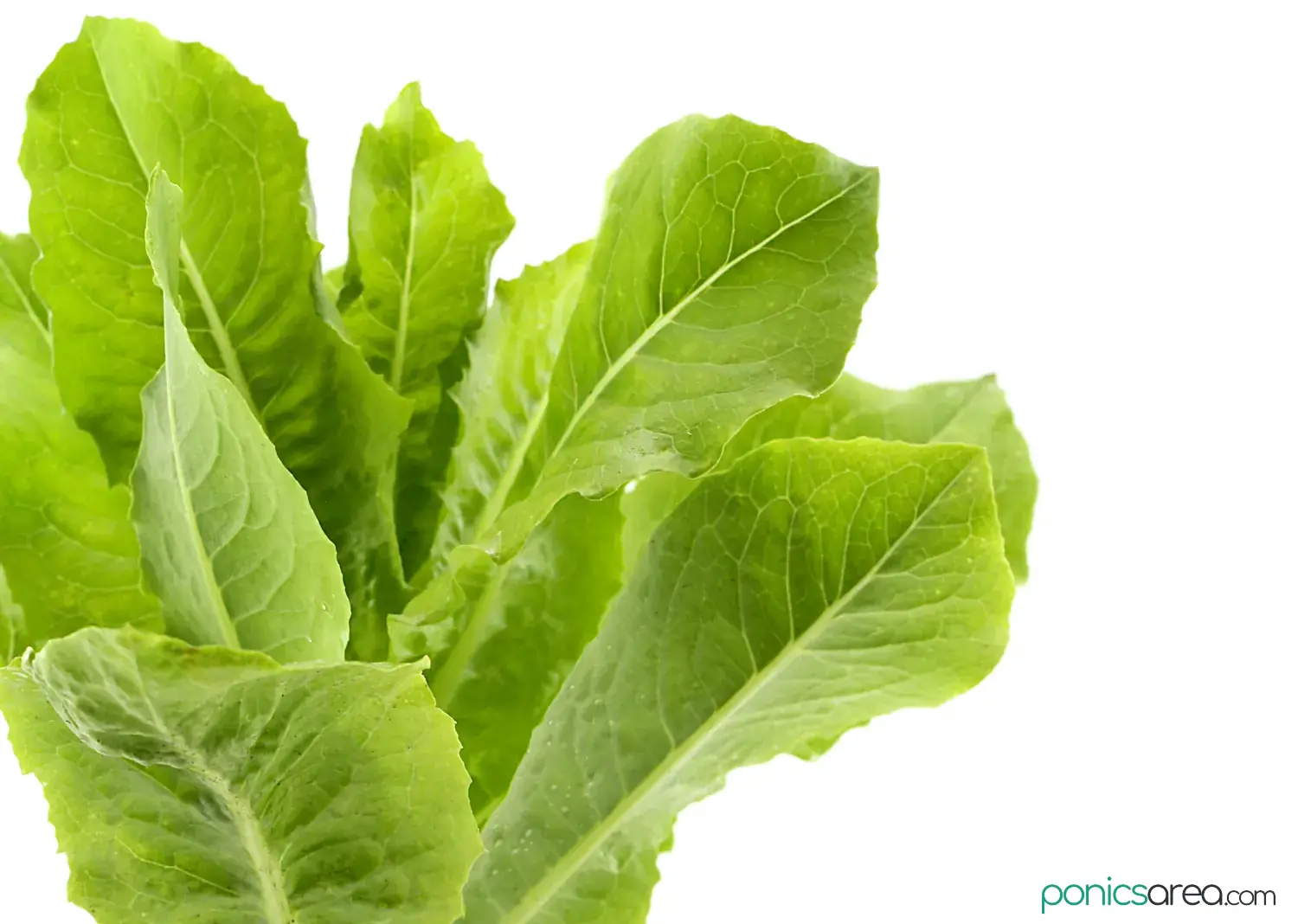
Lettuce and leafy greens are the first vegetables that people attempt growing hydroponically when they buy or make their first hydroponics systems.
It’s either lettuce of herbs, hydroponic basil is another popular choice for beginners.
Knowing how to grow hydroponic lettuce is perfect for beginners. This is a plant that grows easily, is not pretentious and can be grown even in the most simple hydroponics setups, like the Kratky method with mason jars.
The easiest hydroponic lettuce varieties that you can grow are those that don’t form any type of head and they’re known as loose leaf lettuce.
A clear example of lettuce that forms a head is iceberg – don’t start with this variety.
There are quite a few lettuce varieties that you can start off with:
- loose leaf lettuce – if you’re a beginner and you want to grow hydroponic lettuce, the loose leaf is the one to start with, it’s the easiest lettuce variety to grow, both in soil and in water
- butterhead – which I call the classic
- romaine – that I associate with Caesar salad
- lollo – the red variety is so vibrant, just beautiful
Where to Buy?
Check Price and User Reviews Here
Harvesting
For the loose leaf lettuce, it will be about 45-55 days until harvest, while the romaine can take up to 85 days.
But in a hydroponics system with the proper nutrients and grow lights, the lettuce harvest time can be reduced to 30-35 days. That’s the actual beauty of growing hydroponic lettuce and, as you saw, there are a number of ways to do that.

